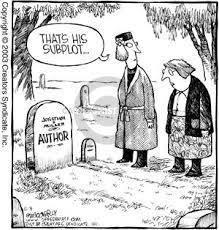Writing subplots can be a rollercoaster of emotions. Now, you might ask yourself, “What is a subplot?”. Well, it’s exactly what it sounds like. A subplot is a secondary plot in your novel. It’s smaller and occurs alongside the main story. A subplot shouldn’t outshine your main story, but many writers make this mistake. It might be an easy mistake if your novel is complex, but if your story is a about romance or saving the world, it’s pretty simple to recognize what is the important story. One of my favorite writers on YouTube, Jenna Moreci, explains the craft of subplots beautifully in one of her recent videos. She is the main inspiration behind this weeks’ blog post topic.
Subplots matter as they show a different side

Authors often use subplots to explore a different side main protagonist’s personality. If your main character is stoic, you might use a subplot to explore their vulnerability. Writing subplots can also introduce side characters or help develop relationships between the two. Whether it’s a friendship, familial, or romantic relationship, you can have meaningful character development through a subplot. It adds realism to your characters, such as two characters falling for one another or disputes between friends. So people can relate to them even if your book’s main plot revolves around a supernatural entity. Last tip, you want the subplot connected to the main plot. Although subplots aren’t supposed to be pivotal to the main plot, they should serve a purpose, otherwise it can feel like filler. When the dust settles, you want your main plot and subplot to resolve at the end of your story so that everything that you wrote is intertwined. Writing subplots is the bread and butter for readers as it helps take radical ideas but mix it with real-life dilemmas.
